Learn how to customize the date and time formats on your Mac, and change the currency type or measurement units for a localized macOS experience.
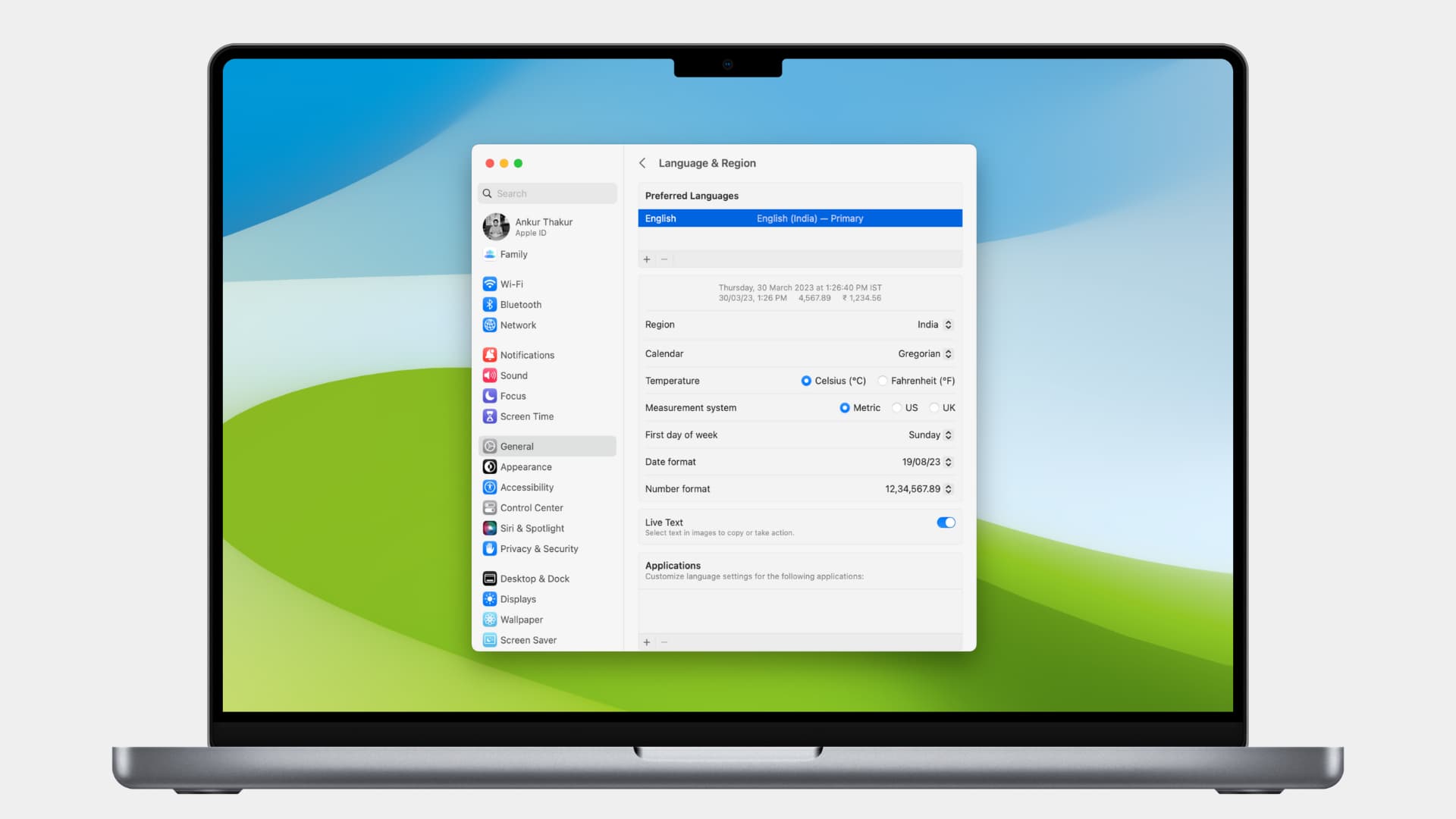
macOS uses your location and language preferences to customize your experience across the system and in apps. But when working on projects with people from all around the world, you’ll want to change the format your Mac uses to display numbers and currencies. Or perhaps you prefer a different date or time format, and would like to set it as your default.
Once you adjust the formats of dates, times, numbers and currencies to your liking, the changes will be reflected in the Finder windows, apps like Mail, and more.
Newer macOS versions
Choose System Settings from the Apple menu and navigate to General > Language & Region to change the default formats used for date (Calendar), weather (Temperature), units (Measurement system), date (First day of week and Date format) and digits (Number format). To change the time format, go to System Settings > General > Date & Time and toggle the switch next to 24-hour time.
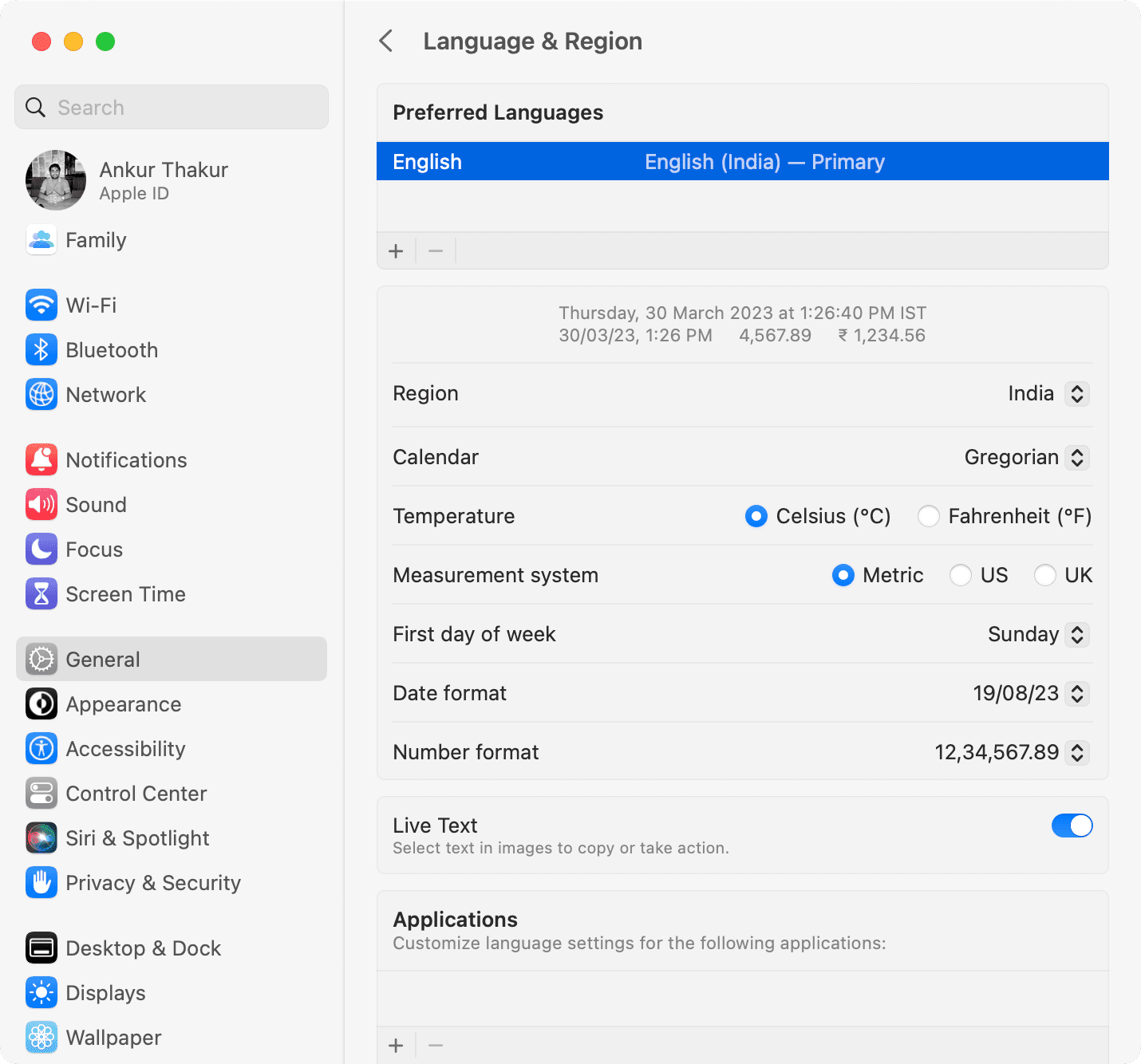
macOS Monterey and older
Choose System Preference from the Apple menu on a Mac powered by macOS Monterey or older version, then choose Language & Region and click the Advanced button.
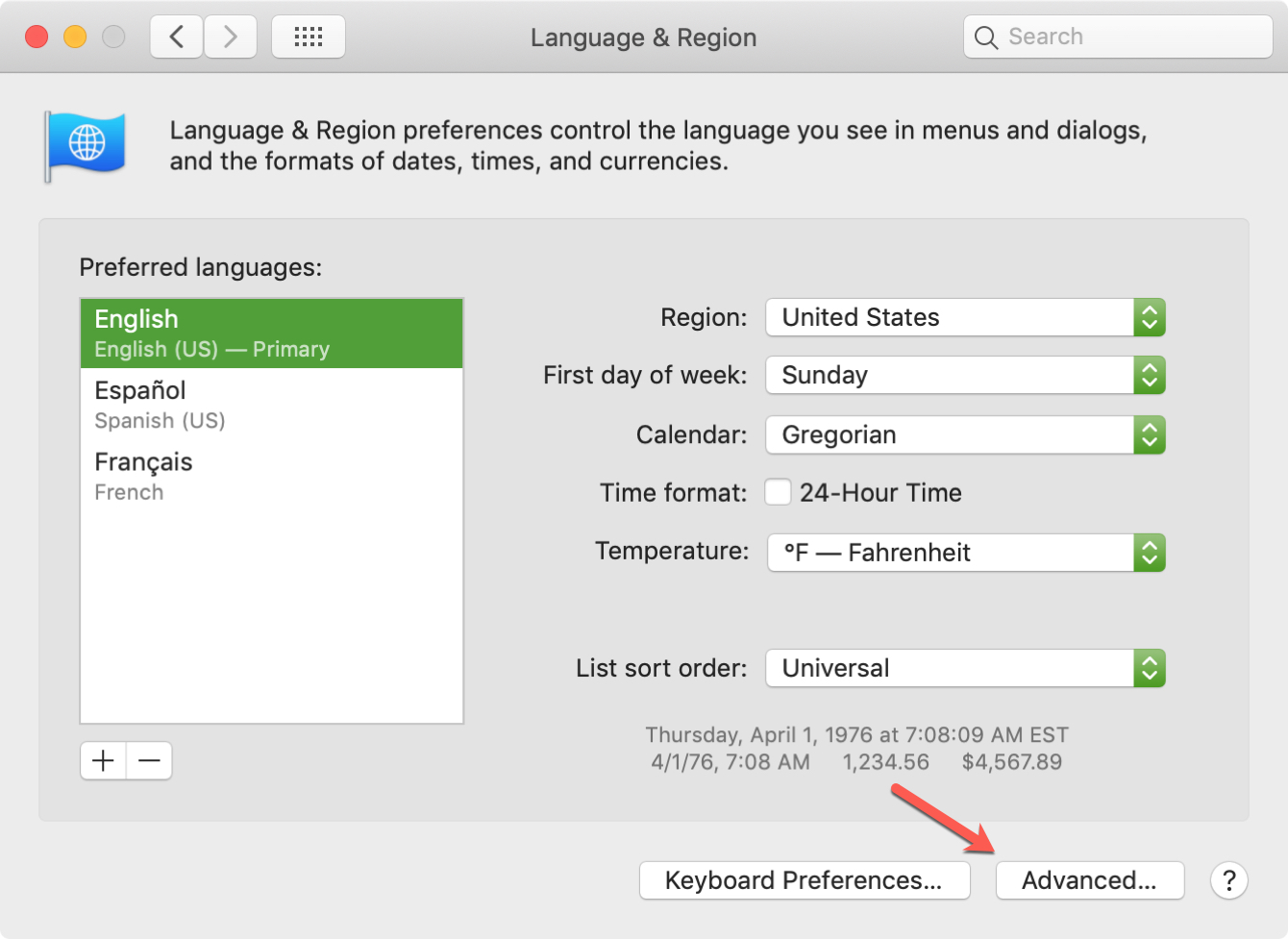
Change the date format
Click on the Dates tab and pick the date format between the short, medium, long, and full options w. You can change any or all with tons of flexibility. In my older job, I had a boss who insisted the long date be always formatted as full year, month and date, like in 2019/01/31.
You can adjust the short, long, medium, and full date formats on your Mac by reordering the year, month and day tags and clicking the small arrow on a tag to change the item format. To make macOS display the date like in my example, you’d drag the year tag to the front of the sequence and click the arrow menu to select the full year, drag the month to the center and click the menu to pick a leading zero and hit the arrow in the day tag to choose its leading zero. Pay attention to punctuation when moving the tags around, so that macOS displays the date correctly with the slashes and commas in the right places.
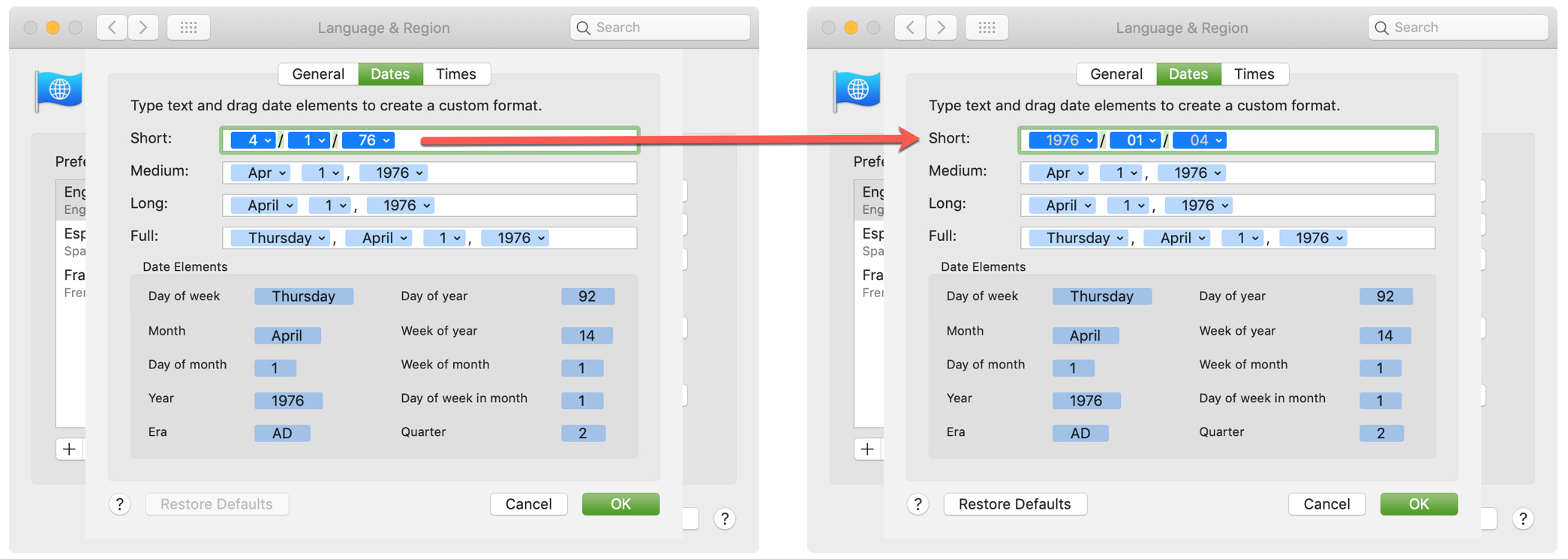
Change the time format
Select the Times tab to customize the short, medium, long, and full time formats by reordering the time tags and switching between the 12-hour and 24-hour formats. Like with the date, other customizations include leading zeros and time zones. For example, to display the time in the 24-hour format with leading zeros for a short time and no AM/PM, click the hour tag arrow and select 01-24, then select and click Delete to remove the AM tag. Click OK to save the changes. If you’d like to change the time format just for the menu bar, go to System Preferences > Date & Time
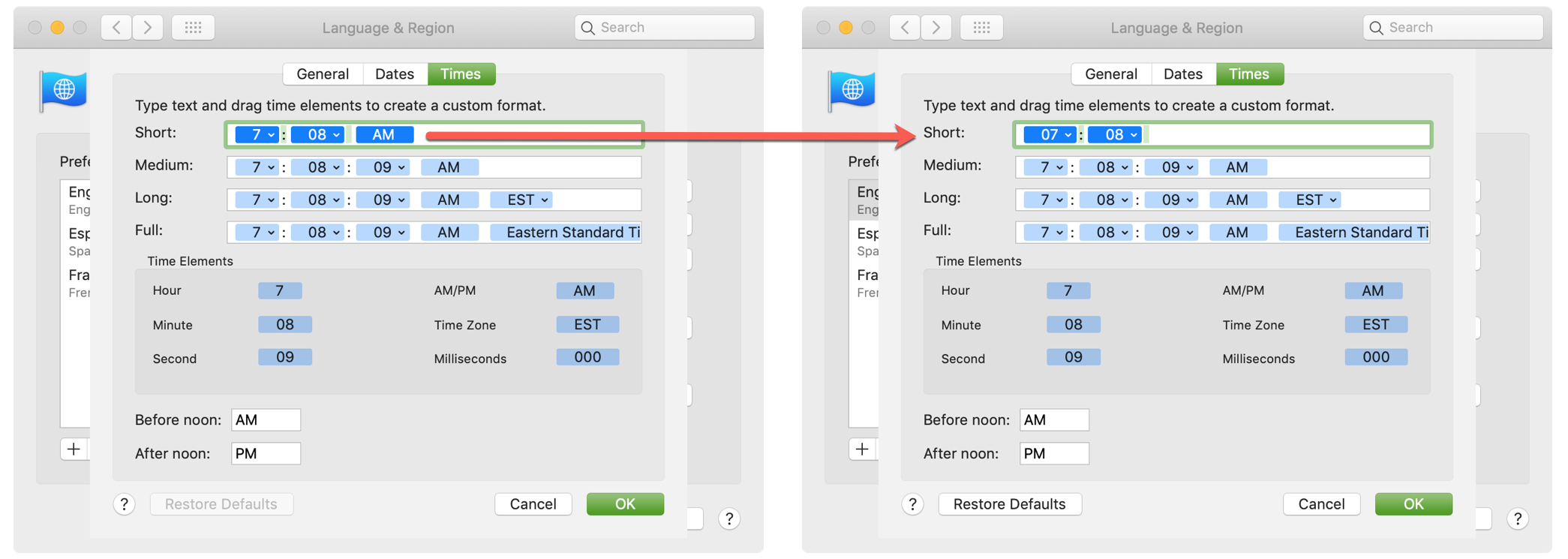
Change the number, currency, or measurement format
Select the General tab to customize your number, currency, and measurement formats.
- Number separators: Maybe you don’t want a comma for your number Groupings, or maybe you prefer a comma over a Decimal. Click the drop-down menus to make these choices.
- Currency: You can select the default currency from the enormous list and adjust the Grouping and Decimal settings for currencies.
- Measurement units: You can choose from Metric, US, or UK.
Click OK after you make any changes to save them. To revert the changes, head back to this section and hit the Restore Defaults button on the corresponding tab.
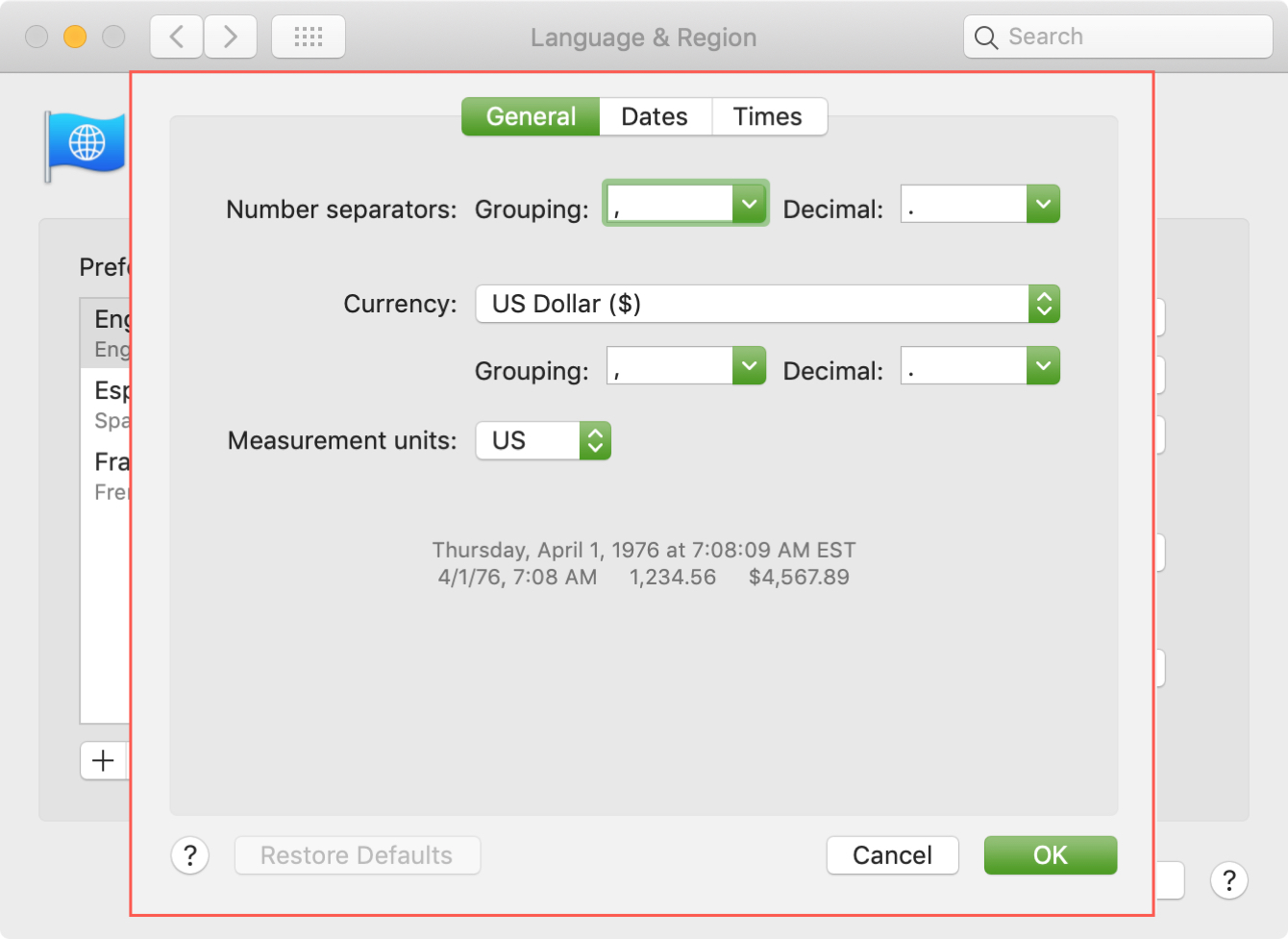
On a similar note: